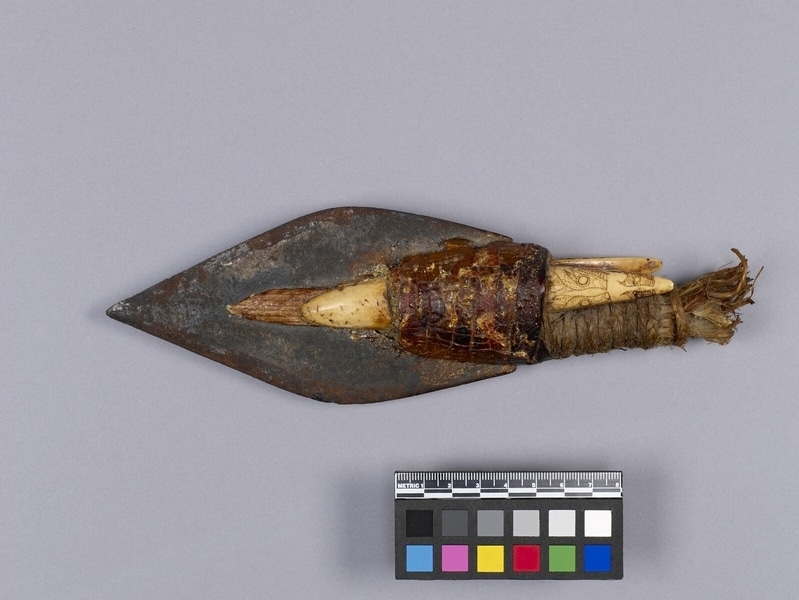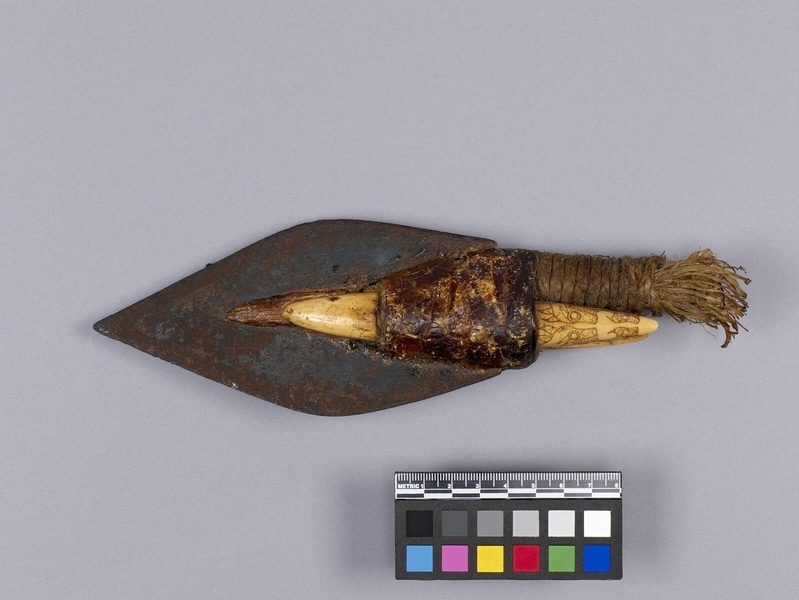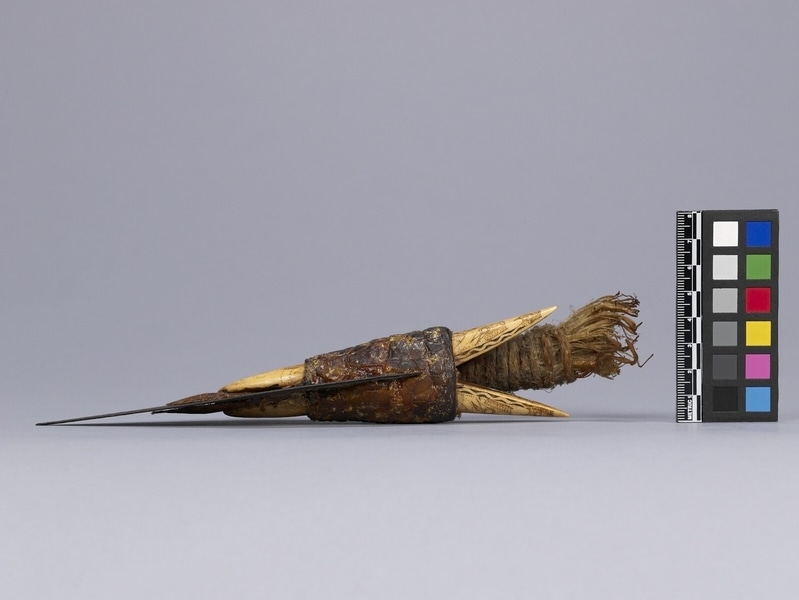Harpoon Head Item Number: A9096 from the MOA: University of British Columbia



Description
Large flat leaf-shaped iron blade. Fixed to the blade with compresses of spruce resin are two antler spurs (elk ?) incised with designs of wolf and snake. Also attached, there is a heavy lanyard of twisted sinew (whale or sea-lion) (used to attach head to long line). Engraved with lightning serpent imagery.
History Of Use
The Nuu-chah-nulth and Makah are the only Northwest Coast Indigenous peoples to have hunted the great humpback and gray whales, performing these feats from canoes on the open Pacific Ocean. This detachable harpoon head was designed to dislodge on impact from the shaft of the whaling harpoon, its metal blade (in earlier times, made of sharpened mussel shell) separating from the antler spurs as body heat from the captured whale softened the glue-like resin. Rigorous training, preparatory rituals and specialized equipment- including yew-wood harpoons, sinew lanyards, sealskin floats, cedar-bark lines- were critical to the success of the whaler and his crew.
Iconographic Meaning
Incised on the spurs, and visible to spirit beings under the sea and beyond the horizon (and to those who look closely), are depictions of hiʔitl’i:k, or lightning serpents—supernatural helpers of the greatest whaler of all, the Thunderbird.
Item History
- Made in Vancouver Island, British Columbia, Canada between 1875 and 1900
- Owned by George Terasaki before June 1969
- Received from George Terasaki (Seller) and Walter C. Koerner (Funding source) during June 1969
What
- Name
- Harpoon Head
- Identification Number
- A9096
- Type of Item
- harpoon head
- Material
- sinew, spruce resin, elk antler, iron metal and wood
- Manufacturing Technique
- worked, bound and carved
- Overall
- height 24.0 cm, width 7.6 cm, depth 4.8 cm
Who
- Culture
- Nuu-chah-nulth
- Previous Owner
- George Terasaki
- Received from
- George Terasaki (Seller) and Walter C. Koerner (Funding source)
Where
- Holding Institution
- MOA: University of British Columbia
- Made in
- Vancouver Island, British Columbia, Canada
When
- Creation Date
- between 1875 and 1900
- Ownership Date
- before June 1969
- Acquisition Date
- during June 1969
Other
- Item Classes
- metalwork
- Condition
- fair